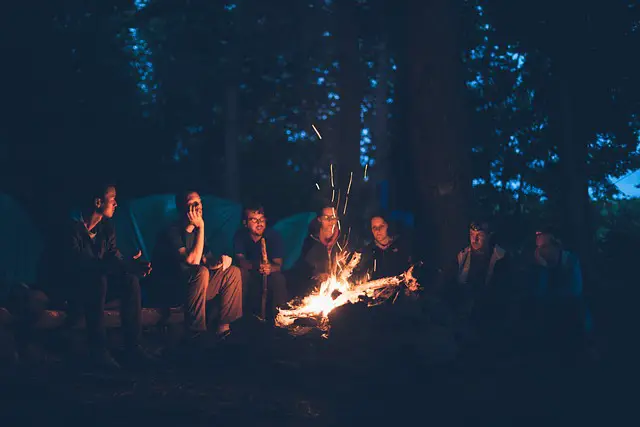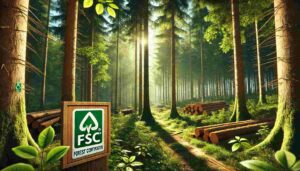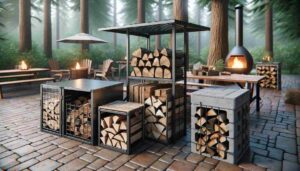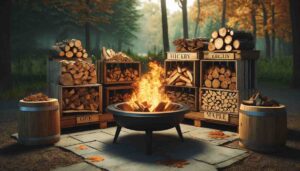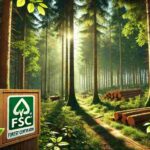The crackling sound of burning wood, the flickering glow illuminating smiling faces, and the tantalizing aroma of roasted marshmallows in the air. But wait, is it a campfire or a bonfire? Many people use these terms interchangeably, assuming they’re one and the same. However, there are subtle yet significant differences that set them apart. Let’s explore the differences and best uses of campfire vs. bonfire.
The distinction between campfires and bonfires lies in their size, purpose, and the experiences they offer. A campfire is a smaller, controlled fire often used for cooking, warmth, and light during camping or outdoor activities. It creates an intimate and cozy atmosphere, ideal for close conversations and bonding. On the other hand, a bonfire is a larger, more robust fire built for celebratory or social purposes. It commands attention with its impressive size and brings an energetic and festive ambiance to gatherings. Bonfires are perfect for socializing, engaging in activities like storytelling or singing, and creating a vibrant atmosphere.
The choice between a campfire and a bonfire depends on the occasion, group size, and desired atmosphere. If you seek an intimate setting for a smaller gathering, a campfire will provide warmth and closeness. For larger events or a lively celebration, a bonfire will offer grandeur and excitement.
As a lover of all things fire-related, I’ve had my fair share of cozy nights and epic gatherings around these warm beacons. Join me on this adventure as I unravel the distinctions between campfires and bonfires in more detail. Let’s dive deep into the fiery world and uncover its unique characteristics, purposes, and the delightful experiences they bring.

Campfire vs. Bonfire: Exploring the Differences and Choosing the Perfect Fire for Your Occasion
Campfires and bonfires are both captivating and enjoyable, but they have distinct characteristics that set them apart. Understanding the differences between these two types of fires will help you choose the perfect option for your occasion. Let’s dive into the details:
Campfires
- Definition: A campfire is a smaller, controlled fire typically used for cooking, warmth, and light during camping or outdoor activities.
- Size and Materials: Campfires are modest in size and are often contained within fire pits or rings. Firewood or charcoal is commonly used as fuel.
- Ambiance and Purpose: Campfires create an intimate and cozy ambiance, perfect for sharing stories and bonding with friends and family. They provide warmth during chilly nights and serve as a practical cooking source.
- Best Uses: Campfires are ideal for camping trips, backyard gatherings, or any occasion where a smaller, more intimate fire is desired.
Bonfires
- Definition: A bonfire is a larger, more robust fire built for celebratory or ceremonial purposes, often accommodating larger gatherings.
- Size and Fuel: Bonfires are grand in scale, featuring towering flames fueled by a substantial amount of firewood or other combustible materials.
- Social Atmosphere and Purpose: Bonfires create a festive and energetic atmosphere, bringing people together to celebrate, socialize, and participate in activities like storytelling and marshmallow roasting.
- Best Uses: Bonfires are perfect for beach parties, bonfire nights, holiday celebrations, or any event where a larger fire and a lively ambiance are desired.
When choosing between a campfire and a bonfire, consider the occasion, the number of attendees, and the desired atmosphere. If you’re looking for an intimate gathering with close friends or a cozy night under the stars, a campfire is the way to go. On the other hand, if you’re planning a larger event or want to create a vibrant and celebratory atmosphere, a bonfire will provide the grandeur and excitement you seek.
Remember to prioritize safety and environmental considerations when enjoying either type of fire. Follow local regulations, choose suitable locations, and be mindful of fire management practices to ensure a safe and responsible experience.
Understanding Campfires and Their Charm
The enchantment of a campfire. There’s something truly magical about gathering around its warm embrace, surrounded by nature and the company of loved ones. But what exactly defines a campfire, and what makes them so charming? Let’s explore:
When we talk about a campfire, we’re referring to a smaller, controlled fire typically used for cooking, warmth, and light during camping or outdoor activities. It’s an integral part of the camping experience, adding an extra layer of comfort and ambiance to the great outdoors.
Unlike its larger counterpart, the bonfire, a campfire is more modest in size. It’s typically contained within a fire pit or ring, ensuring controlled burning and minimizing the risk of spreading. To fuel the campfire, we often use firewood, charcoal, or other easily combustible materials that can generate a steady flame.
One of the most alluring aspects of a campfire is the cozy ambiance it creates. As the flames dance and crackle, they cast a warm, inviting glow that beckons us to gather around and share stories, laughter, and delicious meals. The intimate setting of a campfire fosters a sense of closeness and connection among friends and family.
Campfires serve a multitude of practical purposes in outdoor settings. They are perfect for cooking meals, allowing us to grill tasty treats or cook hearty stews using cast iron pots. Furthermore, during chilly nights, a campfire becomes a reliable source of warmth, providing comfort and extending the enjoyment of the outdoors.
While campfires are delightful, it’s essential to know how to build and maintain them safely. Start by choosing a suitable location, preferably a designated fire pit or an area with non-flammable surroundings. As you construct your campfire, ensure proper ventilation, use dry firewood, and follow the guidelines of the campground or outdoor area. Remember to never leave a campfire unattended and extinguish it completely before leaving.
Personal Tip: When building a campfire, I find it helpful to arrange the firewood in a teepee shape, allowing for adequate airflow and a steady burn. This technique ensures a well-balanced fire that will keep you warm and provide a beautiful display.
Embracing the Grandeur of Bonfires
Now, let’s step into the realm of bonfires, where flames reach for the sky and the atmosphere brims with excitement. Bonfires have a majestic quality that captivates our imagination and sparks a sense of wonder. Let’s explore the grandeur of bonfires:
A bonfire is a larger and more robust fire, often built for celebratory or ceremonial purposes and designed to accommodate larger gatherings. Unlike campfires, which are common in camping settings, bonfires are often associated with special events or occasions that call for a grand display of fire.
Bonfires hold a rich cultural and historical significance in various societies and traditions. They have been used for centuries in festivals, rituals, and social gatherings, symbolizing unity, purification, and celebration. Whether it’s a midsummer bonfire or a bonfire night celebration, these fiery spectacles bring people together in joyful communion.
One notable distinction of bonfires is their impressive size. They can tower over campfires, with flames reaching great heights. Bonfires require a substantial amount of fuel, often comprised of large logs or piles of wood, to sustain their majestic blaze. This abundance of fuel contributes to the awe-inspiring visual impact of a bonfire.
Bonfires create an atmosphere of festivity and camaraderie. They serve as a focal point for social interaction, encouraging people to gather, converse, and partake in shared activities. Whether it’s a beach party, a bonfire night celebration, or a holiday gathering, the allure of a bonfire brings people closer, fostering a sense of connection and shared experiences.
Bonfires are not just about the mesmerizing flames; they also provide a platform for various activities and traditions. From storytelling to sing-alongs, roasting marshmallows to dancing around the fire, the possibilities are endless. Bonfires ignite our creative spirits and offer opportunities for fun and memorable experiences.
Personal Tip: When preparing for a bonfire, gather a variety of firewood, including larger logs for a sustained burn and smaller kindling for easy ignition. Consider creating a seating area around the bonfire with comfortable chairs or blankets to enhance the social atmosphere.
Prioritizing Safety and the Environment
When it comes to enjoying the beauty and warmth of fires, whether it’s a campfire or a bonfire, safety and environmental considerations should always be a top priority. Let’s explore some essential guidelines to ensure a safe and eco-friendly experience:
Campfire Safety
- a. Choose a suitable location: Select a designated fire pit or an area with non-flammable surroundings. Keep a safe distance from tents, trees, and other structures.
- b. Prepare the fire pit: Clear away any flammable materials, such as dry leaves or debris, from the area surrounding the fire pit.
- c. Use appropriate firewood: Opt for seasoned firewood that is dry and free from chemicals. Green or damp wood can cause excessive smoke and be harder to ignite.
- d. Keep a safe distance: Ensure a safe perimeter around the campfire and discourage children and pets from getting too close.
- e. Extinguish the fire properly: When you’re done, pour water over the fire and stir the ashes until they are cool to the touch. Never leave a campfire unattended.
Bonfire Safety and Environmental Considerations
- a. Obtain necessary permits: Check local regulations and obtain any required permits before organizing a bonfire event. Compliance is essential to ensure safety and avoid fines.
- b. Prepare the site: Choose a spacious and well-ventilated area away from structures, vegetation, and overhead obstructions. Clear the site of any flammable materials.
- c. Monitor wind conditions: Be aware of wind direction and strength to prevent sparks or embers from causing unintentional fires.
- d. Have firefighting tools available: Keep a fire extinguisher, sand, or a bucket of water nearby for emergencies. Ensure that everyone knows the location of these tools.
- e. Clean up after the event: After the bonfire, thoroughly extinguish the fire and clean up any remaining debris. Leave the area as clean or cleaner than you found it.
Eco-friendly Practices
- a. Sustainably sourced firewood: Choose firewood from sustainable sources or use alternative fuels, such as eco-friendly fire logs or pellets.
- b. Leave No Trace: Follow the principles of Leave No Trace, which emphasize minimizing environmental impact. Pack out any trash, including food scraps and packaging.
- c. Consider alternatives: In environmentally sensitive areas or during fire restrictions, consider alternative cooking methods like portable stoves or grills that leave minimal traces.
Remember, fires can be unpredictable, and safety should always be the top priority.
Personal Tip: Before embarking on any outdoor fire experience, I make it a point to check local regulations, weather conditions, and fire danger levels. It’s better to be well-prepared and informed to ensure a safe and enjoyable experience for everyone involved.
Conclusion
In conclusion, the distinction between campfires and bonfires lies in their size, purpose, and the experiences they offer. Campfires provide an intimate and cozy setting, perfect for close conversations and bonding, while bonfires command attention with their grandeur, creating an energetic and festive atmosphere. When choosing between a campfire and a bonfire, consider the occasion, group size, and desired ambiance to ensure the perfect fire for your gathering.
Clarification: It’s important to note that the terms “campfire” and “bonfire” are often used interchangeably and can have different interpretations depending on regional or cultural variations. The definitions provided in this article represent general characteristics, but it’s essential to consider local regulations and cultural context when planning any fire-related activities. Always prioritize safety and environmental responsibility, follow relevant guidelines, and obtain necessary permits or permissions for fire usage in your specific location.
No matter which fire you choose, whether it’s a campfire or a bonfire, both offer opportunities for connection, warmth, and the creation of lasting memories. So gather around the fire, share stories, laughter, and the joy of being together. Let the flames light up your gathering and ignite unforgettable moments that will warm your heart for years to come.
Thank you for joining me on this journey through the world of campfires and bonfires. May your future fire-lit gatherings be filled with laughter, friendship, and unforgettable moments. Stay safe, be responsible, and keep the fire of adventure alive!
Related article: What Can You Burn In A Fire Pit Other Than Wood?


